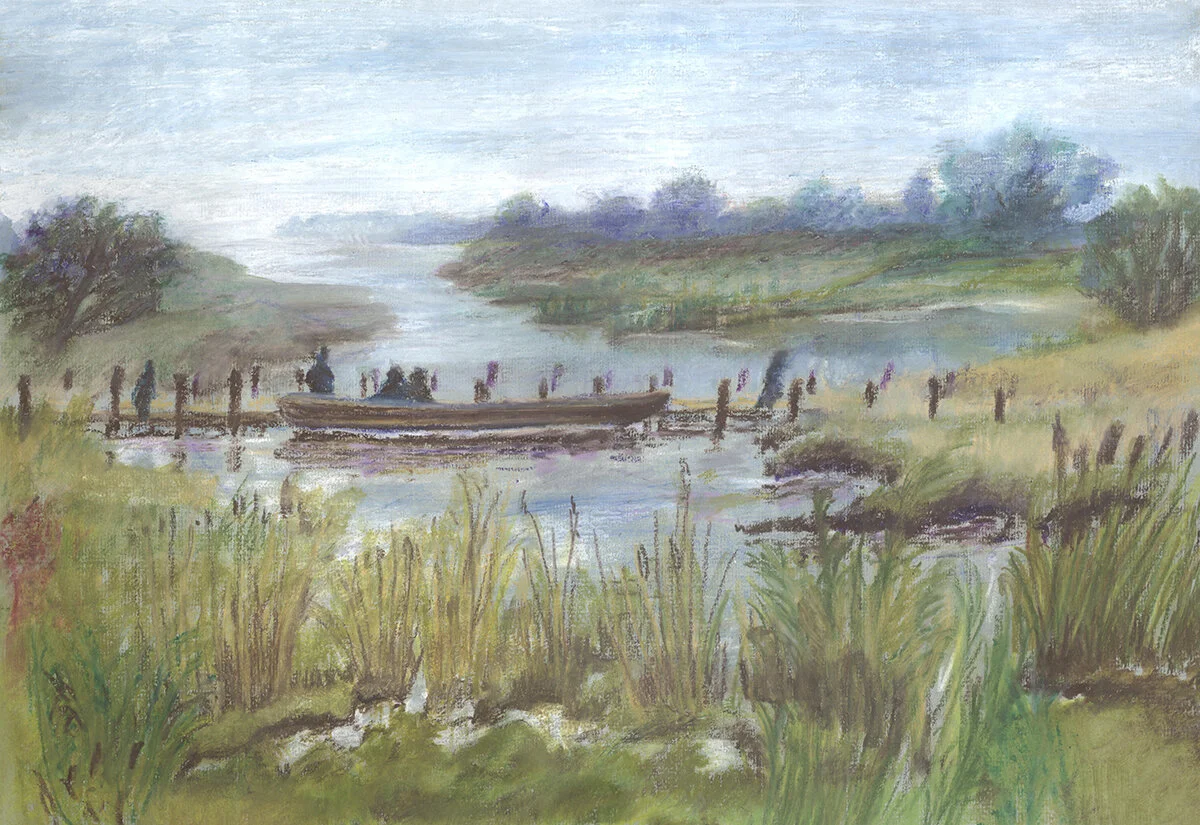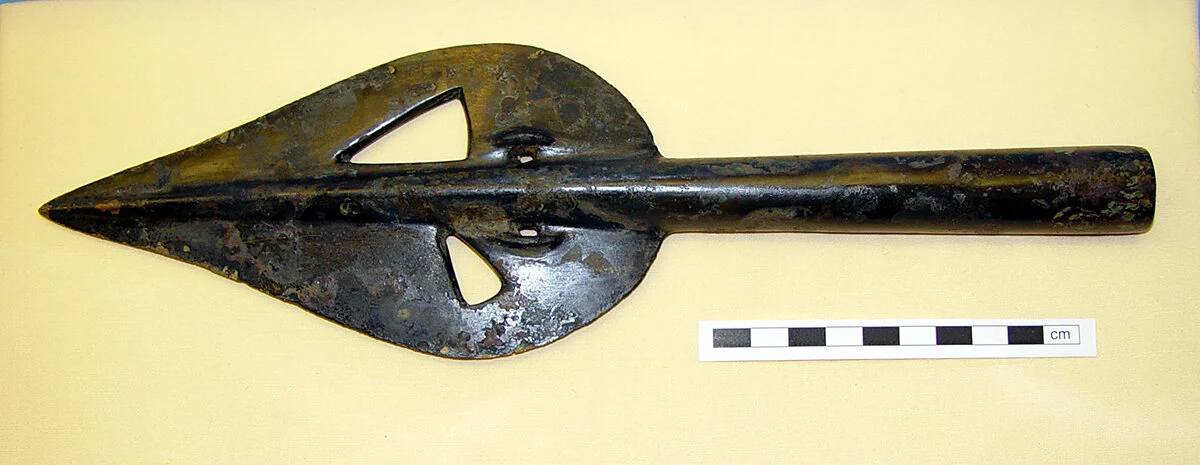A Bronze Age Logboat
To celebrate the Council for British Archaeology: Festival of Archaeology 2020, Co-Production Curator Rachel Atherton shares all about our incredible Bronze Age logboat. Rachel explains its history and how the logboat shows the impact humans have had on the natural environment.
The logboat at Derby Museum and Art Gallery
This huge logboat was made from a single oak tree trunk, about 3,400 years ago, during the middle of the Bronze Age. It was found by workers at a gravel quarry by the River Trent at Shardlow in 1998 and was then carefully excavated and conserved by archaeologists, before going on display in Derby Museum and Art Gallery.
An artist’s impression of the logboat and causeway
I love it because it gives us a glimpse into the lives of the people who made and used it, and into their natural world. It is also a great illustration of the effect humans have had on the natural environment in this country.
It is huge, at over 10m long. Oak trees of the size needed to make this boat do not grow in the UK anymore. They can only grow in dense virgin forest or ‘wildwood’, where the trees have to grow tall and straight to get to the light at the top of the forest canopy. Logboats in the Bronze Age were often this long but later on they were shorter, presumably due to the lack of very tall trees, caused by people deforesting large areas to grow crops, and then managing what forest was left.
The boat was made during a time of gradual climate change in Northwestern Europe, when the weather became much wetter, with increased storms and flooding. The excavation showed that the boat had been moved in the river gravel and buried 5 metres down at some time during a giant flood.
The site appears to have been an important place for Bronze Age people, who had religious beliefs and rituals in which rivers and other ‘watery places’ played a major role. Many bronze weapons and tools, such as swords, spears and axes, have been found during quarrying at the site, and it’s thought they were thrown into the river as offerings to gods or ancestors. The modern tradition of throwing coins into wells may perhaps be linked to these much earlier rituals.
A spearhead that was found at the same quarry. We think this is a ritual offering.
When the boat sank it was carrying a cargo of a ½ tonne of sandstone, which had been quarried from a few kilometres upstream at Kings Mills. The stone was probably being ferried to the site to strengthen a causeway that crossed the River Trent. The causeway may have been used by people for throwing their offerings into the water.


